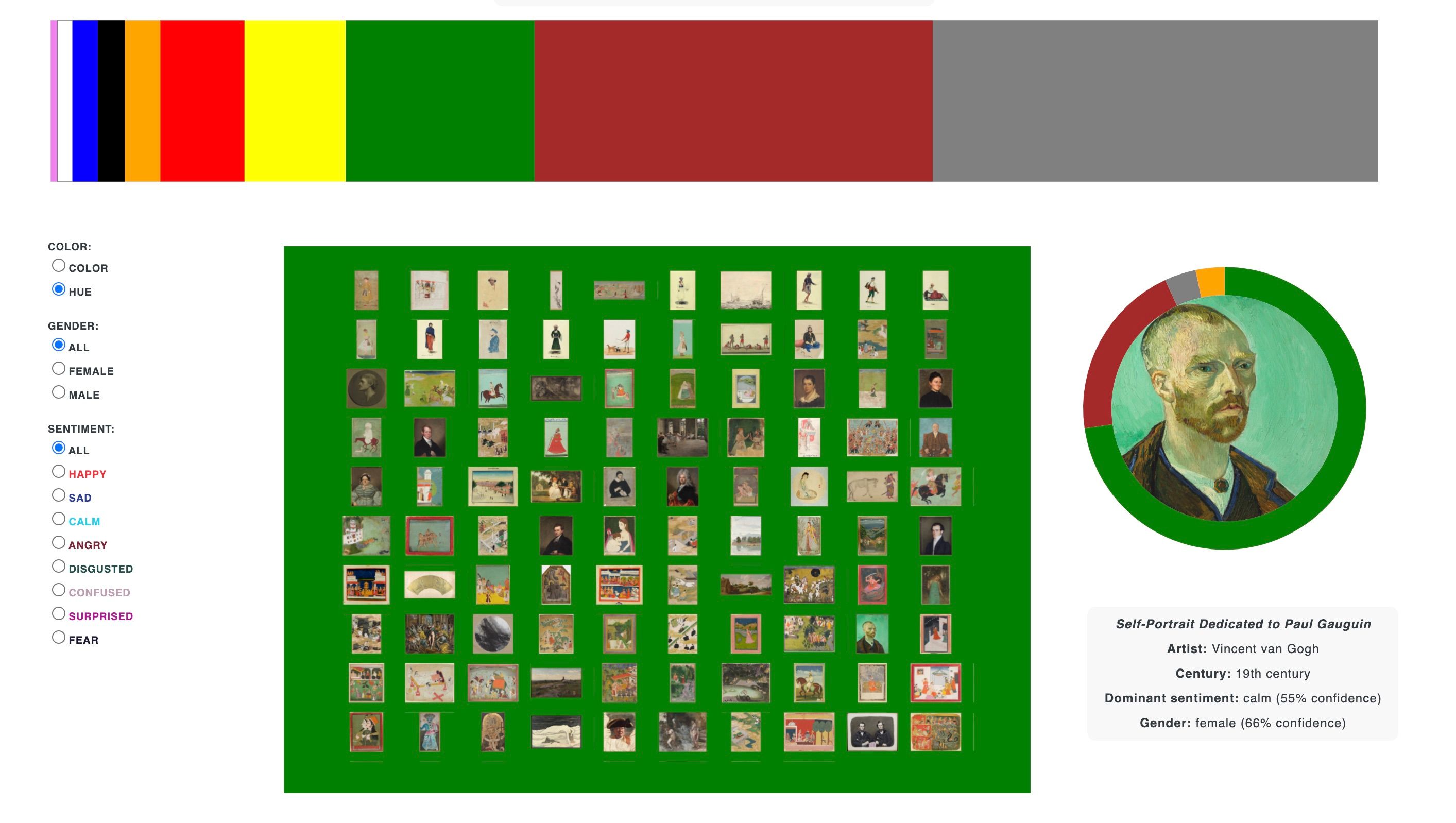Second Look
Gender and Sentiment on Show
Second Look calls attention to the circularity of how an artificial intelligence ‘sees’ and ‘knows’ by asking it to infer gender and sentiment in paintings from the Harvard Art Museums.- Time
- –
- Location
- Harvard Art Museums

Not unlike animal forms of intelligence, artificial intelligence relies upon pattern recognition. But its understanding of patterns is dependent upon rigid and rigorous categories predefined by human programmers and upon far more limited data inputs than those provided by the sensory apparatus of a sentient being. Second Look calls attention to the circularity of how an artificial intelligence “sees” and “knows” by asking it to infer gender and sentiment in paintings from the Harvard Art Museums. The result is a curatorial exercise that, as it exposes aspects of how gender has been interpreted by painters across time within the Harvard collections, showcases the powers and limitations of AI as an analytical tool.
Conventional AI tools and services like the ones on exhibit, there exist only eight emotions and two genders; conflicted emotions and interstitial gender identities exist only as degrees of uncertainty along the path to a definitive single identification. By making a show of how an AI “sees” and “knows,” Second Look seeks not only to probe how an AI’s predetermined codes filter and interpret the perception of emotion and binary gender identity but also how similar assumptions propagate cultural norms within contemporary society.
Curatorial A(i)gents presents a series of machine-learning-based experiments with museum collections and data developed by members and affiliates of metaLAB (at) Harvard, a creative research group working in the networked arts and humanities.



